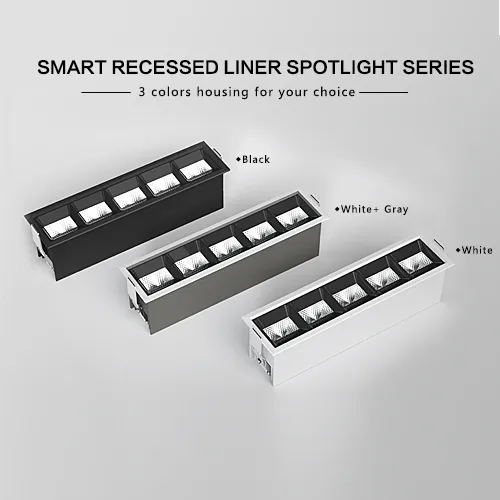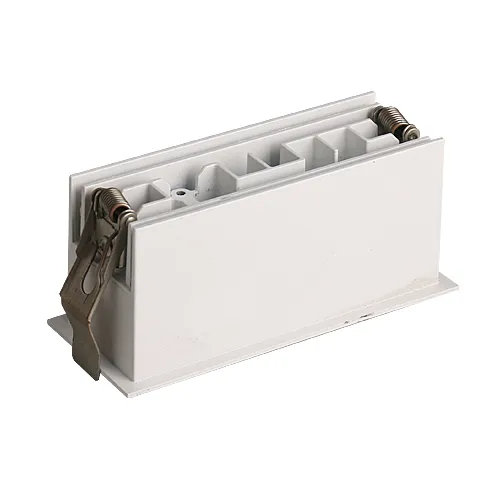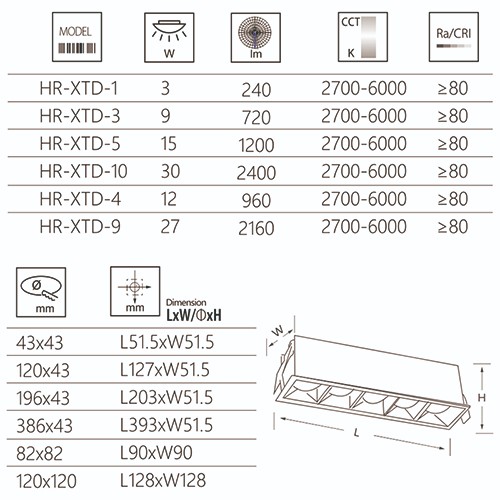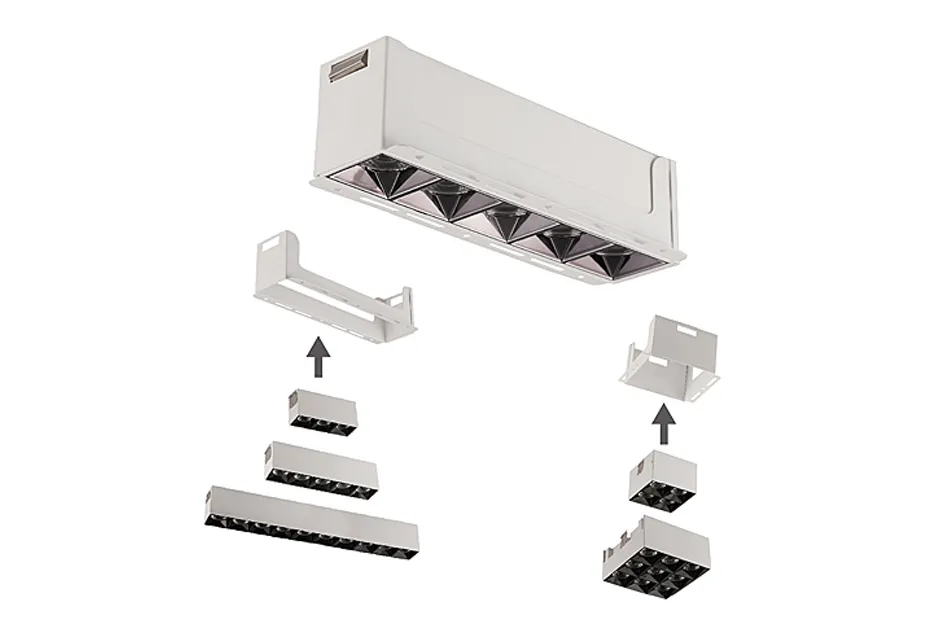What is the size of a linear LED lamp?
Linear LED lamps are widely used in lighting of various spaces due to their high efficiency, long life and flexible design. From residential and office to commercial and industrial fields, linear LED lamps have improved the quality and visual effects of lighting in their own unique way.
Faced with the various linear LED lamps on the market, many consumers will encounter a problem when choosing: What is the size of a linear LED lamp? What spaces are linear LED lamps of different sizes suitable for?
This article will explore this issue in depth to help consumers understand the size standards, selection basis and application scenarios of linear LED lamps, so as to make more informed purchasing decisions.

What is a linear LED lamp?
Linear LED lamps are a linear lighting device with a straight body, usually composed of multiple LED light sources, suitable for places that require uniform and extensive lighting. Unlike traditional fluorescent tubes or incandescent tubes, linear LED lamps have gradually replaced traditional light sources with their advantages such as energy saving, long life and low maintenance costs.
Linear LED lights generally adopt a modular design, consisting of multiple LED chips connected in series or in parallel. The lamp body is usually made of aluminum alloy or plastic material, with a transparent or frosted lampshade on the outside to protect the LED chip and ensure uniform light scattering.

What is the size of a linear LED lamp?
The size of a linear LED lamp usually depends on its application scenario, light source layout, and design requirements. Although linear LED lamps have certain flexibility and customization space, the common size range we have in the market is relatively fixed. The following will discuss the common sizes of linear LED lamps from several key dimensions.
1. Length size
The length size of a linear LED lamp is one of the most critical parameters, and lamps of different lengths are suitable for different spaces and application requirements. The length of a linear LED lamp is usually measured in meters, and common length sizes are:
•0.6 meters: Suitable for smaller spaces or areas that require less brightness, such as wardrobes, small corners of the kitchen, display cabinets, etc. This type of linear LED lamp is generally used to illuminate a small area and has high flexibility.
•1.2 meters: 1.2 meters is one of the most common linear LED lamp sizes, widely used in home and commercial lighting, such as kitchens, corridors, offices, conference rooms, etc. 1.2-meter lamps usually provide sufficient brightness and adapt to most standard space sizes.
•1.5 meters: Suitable for areas that require a larger lighting area, such as shops, warehouses, industrial plants, etc. 1.5-meter linear LED lamps usually have higher brightness output and are suitable for lighting large spaces or high ceilings.
•2 meters and above: 2 meters and longer linear LED lamps are suitable for large spaces, such as airports, stadiums, shopping malls, large offices, etc. These lamps usually have higher power and brightness, which can meet the lighting needs of large areas.
It should be noted that the length of linear LED lamps is not limited to standard sizes. Many manufacturers provide customized services, and consumers can choose the appropriate length according to actual needs.
2. Width and thickness
The width and thickness of linear LED lamps mainly affect their appearance, installation method and lighting effect. Generally, the width and thickness of linear LED lamps are relatively small, which is convenient for flexible installation in different spaces. The following are common size ranges:
• Width: Common linear LED lamps are approximately 20 mm to 50 mm wide. Smaller width lamps are usually used in slender spaces or places with simpler design requirements; wider lamps are suitable for lighting larger areas and can provide more light output.
• Thickness: Linear LED lamps are usually between 10 mm and 50 mm thick. The thinner design allows these lamps to adapt to various installation requirements, including embedded installation, surface mounting or ceiling mounting. Thicker designs are often associated with high brightness and stronger heat dissipation performance, suitable for places requiring high-intensity lighting.
3. Lamp tube diameter and power supply integration
Many linear LED lamps are also designed with lamp tube diameter or power supply integration in mind. Lamps with higher power supply integration usually do not require an external power supply, but integrate the power supply module into the lamp body. These lamps are usually thicker, but help improve aesthetics and reduce the space occupied by additional cables and external power supply boxes.

How to choose the right size linear LED lamp?
Choosing the right size of linear LED lights requires considering multiple factors, including space size, lighting effects, installation methods, and budget. Here are a few key points to consider when choosing the right size of linear LED lights:
1. Space size matches lamp length
When choosing linear LED lights, you first need to determine the length of the lamp according to the size of the space. Lamps that are too short may not provide adequate lighting effects, while lamps that are too long may cause unnecessary waste. In home spaces, 1.2-meter linear LED lights are usually the most common choice, while in large commercial or industrial spaces, lamps that are 2 meters or longer may be more suitable.
2. Lighting needs and brightness
The brightness of linear LED lights is usually determined by power, number of LEDs, and light efficiency. For places that require high brightness, such as kitchens, workshops, warehouses, etc., it is more appropriate to choose longer and more powerful linear LED lights. For general living spaces, such as corridors, living rooms, etc., standard lamps of 1.2 meters or 1.5 meters can usually meet brightness requirements.
3. Installation method and lamp size
There are many ways to install linear LED lights, including surface mounting, hanging mounting, embedded mounting, etc. Different installation methods may affect the size selection of lamps. For example, recessed-mounted lamps need to be sized to fit the installation location, and the heat dissipation performance of the lamps and the layout of the power interface need to be considered.
4. Budget and brand selection
Budget is also an important factor that must be considered when choosing the right size linear LED lamp. High-brightness and customized-design lamps are usually more expensive, so you need to weigh your budget when choosing. In addition, the sizes of linear LED lamps from different brands may vary, and consumers can choose the most suitable size based on the brand's product line.

What are the application scenarios of linear LED lamps of different sizes?
The size of a linear LED lamp not only determines its scope of application, but is also closely related to the lighting effect, space layout, and ease of use. Here are some common application scenarios and their applicable linear LED lamp sizes:
1. Home and office
In home and office environments, 1.2-meter linear LED lamps are the most common choice. It is suitable for areas such as corridors, kitchens, study rooms, and living rooms, and can provide sufficient brightness without taking up too much space. For areas that require higher brightness (such as kitchen countertops), you can choose lamps that are 1.5 meters or longer.
2. Commercial and Retail
In commercial retail environments, linear LED lights are usually required to provide high brightness and uniform lighting effects. Sizes of 1.5 meters to 2 meters are more suitable, especially in large-area stores, supermarkets, display areas, etc. Longer lamps can ensure uniform lighting over larger areas.
3. Industrial and Warehousing
For industrial and warehousing environments, stronger light sources and larger lighting coverage areas are usually required. Therefore, linear LED lights of 2 meters and above are ideal. Such lamps can provide higher brightness to meet the lighting needs of production workshops, warehouses, etc.
What’s your monthly production capacity for LED lighting products?
Huari Lighting operates a large-scale factory in China with a production capacity exceeding 1,000,000 units per month. This allows us to meet high-volume purchasing demands from international wholesalers, contractors, and brand distributors. Our advanced production lines ensure timely delivery, even during peak seasons.
